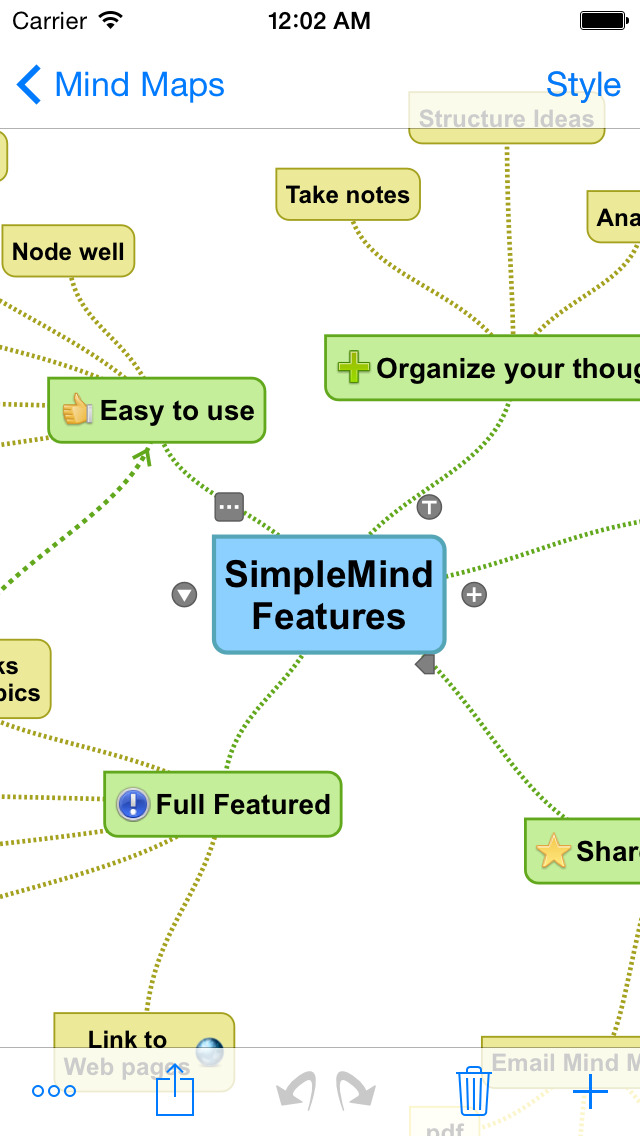

Minutes later, SimpleMind popped-up a notice that there was a conflict and SimpleMind would save another mind map.
Simplemind free vs paid android#
I modified on my Android device, went back to my Desktop, waited for the Dropbox notification “ was recently updated” in the upper right of my Mac, and started viewing the mind map in SimpleMind, and expanding nodes. So I paid $5 on Google Play to test my primary Android device with syncing.

With auto-layout, searching in FreeMind is simple and clean. For all you Clint Eastwood fans :D, I must say, this is the ugly (see screenshot below): The currently highlighted node can sometimes be hidden, as it is below, depending on how you finagle the search. When searching for something such as “load”, the nodes expanded, no exploded, into an impossible amount of overlapping. In SimpleMind, I spent way too much time… maybe over 1 hour… compulsively organizer my higher level branches (pardon my advance math speak, but I’ll call the individual branch points nodes) as much as possible so they would not overlap. Poor search (find) support. Maybe my mind maps are huge.No practical way to reconcile the differences when a conflict arises.

Simplemind free vs paid full#
Two versions of SimpleMind are available from the Apple AppStore: a free Express version and a full paid version, for US$6.99.īottom line: SimpleMind is a capable mind mapper, but compared to more fully-featured apps like iThoughts and iBlueSky, it has a ways to go to catch up. You can enter the server’s address in the program’s settings.

You can also upload Simple Mind maps to your own web server.
Simplemind free vs paid pdf#
Optionally, you can also adjust the program settings to upload maps in PDF or PNG file formats (which are view only). The program’s “save to web” command uploads your maps in a file format that can be downloaded by other Simple Mind users. Maps can be exported in OPML (structured outline) and Freemind formats. At this point in time, it’s not possible to attach a map in its native file format to an e-mail, because Apple disallows it. Maps can be shared with others via e-mail, or uploaded to the Simple Mind web server. What’s missing in SimpleMind is the ability to add notes and links, which I view as essential to mind mapping applications, no matter what platform they are designed for. The developer says that the ability to create new customized visual styles will be supported in a future version. Map styles – incorporating background, topic and text colors – can be applied to the entire map, but not to individual topics. The developer says that the size of maps you can create in SimpleMind is limited only by the memory of your iPhone or iPod Touch. Topics may be rearranged by dragging and dropping them, and cut, copy and paste commands can be used to move topics between maps. SimpleMind enables you to add, edit and rearrange map topics. Like its name suggests, SimpleMind provides basic mind mapping functionality. Thanks to a recent post on Twitter, I recently learned about another new mind mapping tool for the iPhone and iPod Touch called SimpleMind.


 0 kommentar(er)
0 kommentar(er)
